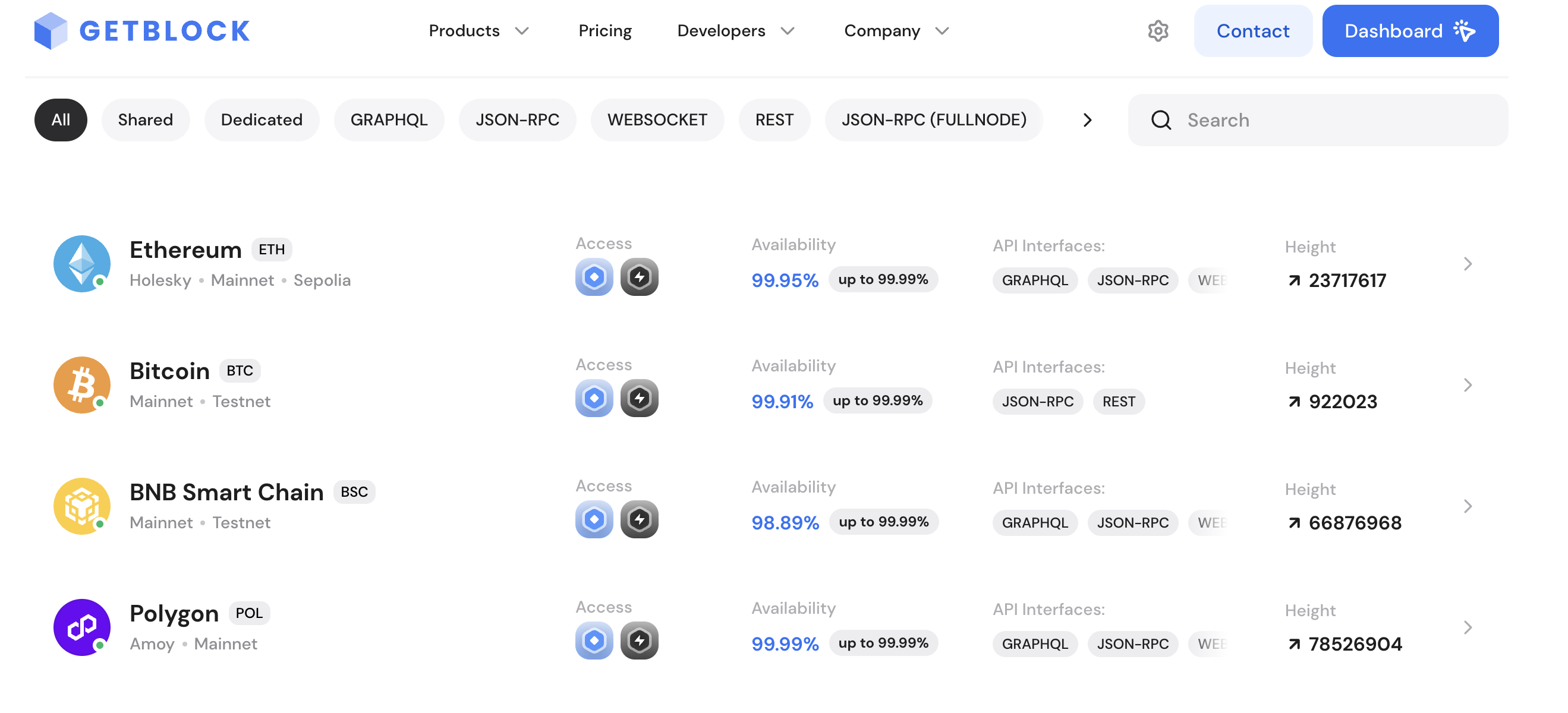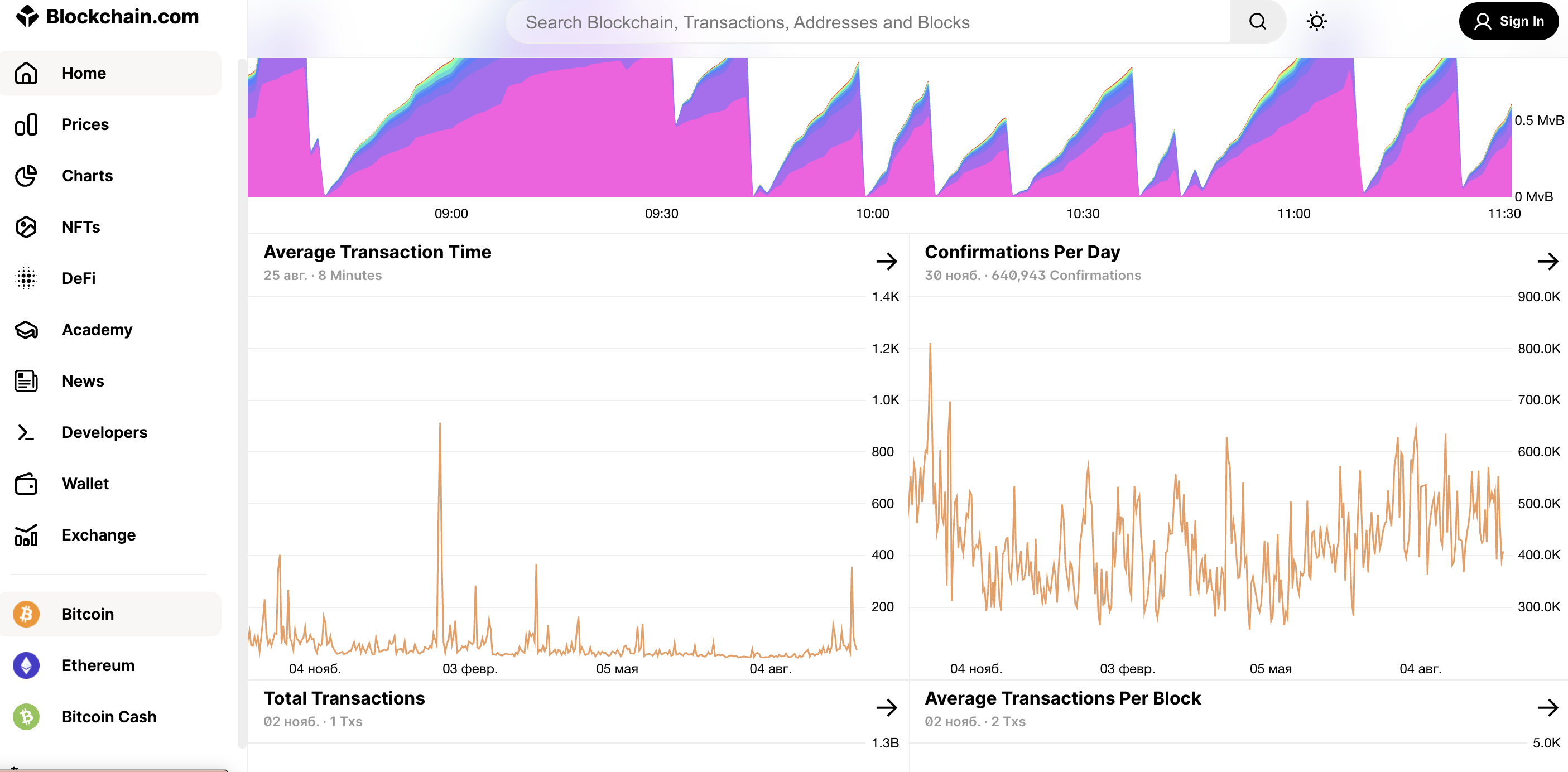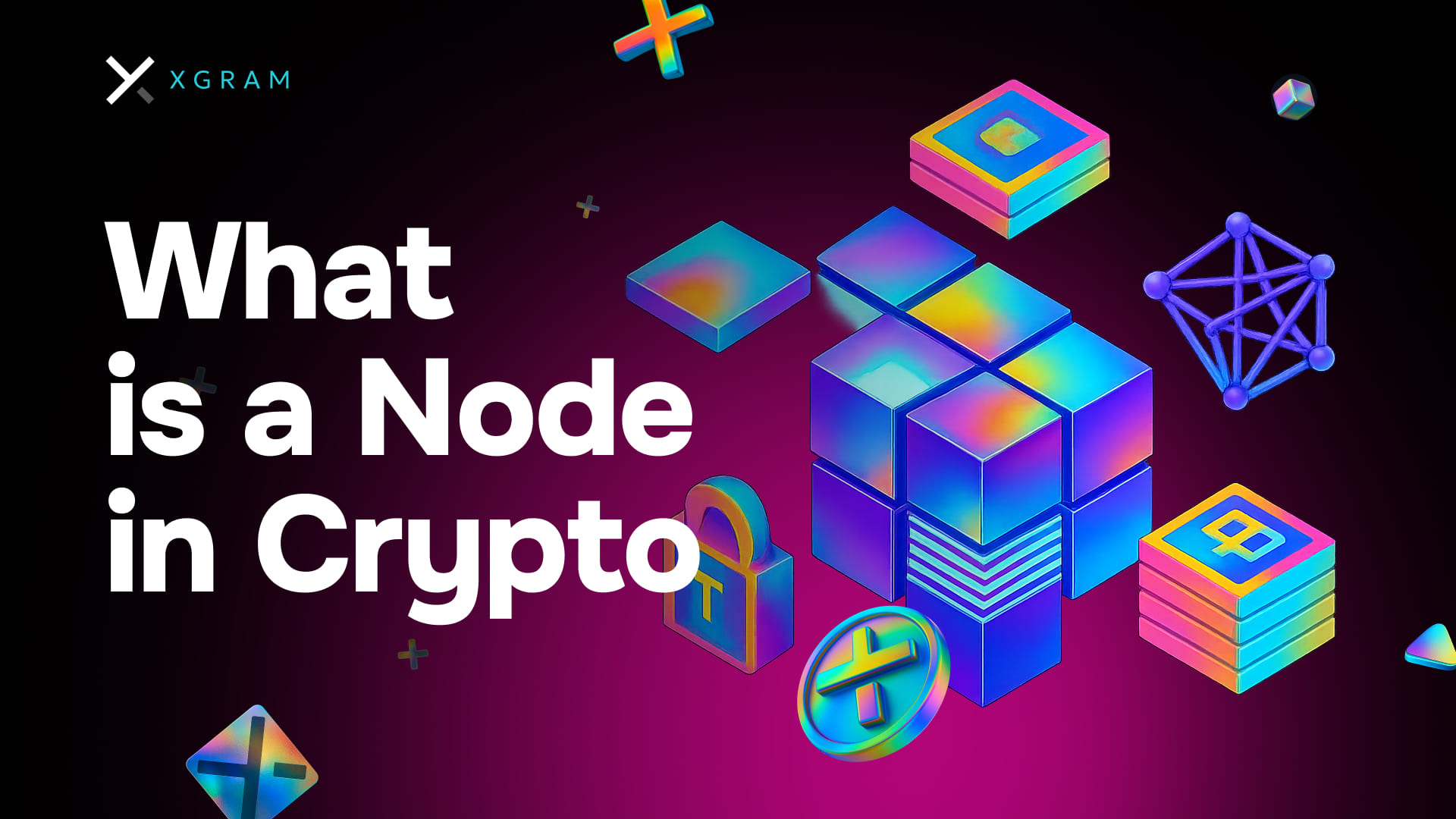Below, you will find a clear breakdown of how nodes work, why they are essential, and how you can interact with them as a crypto user. If you have heard about P2P trading, cross-chain transfers, or even thought about hosting a node yourself, this guide will help you see how the puzzle pieces fit together. Let’s dive deeper into the key concepts behind blockchain nodes.
Explore the basics of blockchain

To understand nodes better, it helps to get a grasp on blockchain architecture and its underlying principles. A blockchain is a public, decentralized ledger made up of a chain of data blocks. Each block includes a batch of transactions and a unique reference to the previous block. This creates a chronological stamp of all transactions, making data tampering extremely difficult. A blockchain’s core strength lies in its distributed nature: multiple participants in the network (aka “miners,” “validators,” or just “nodes”) hold copies of the ledger, and that helps verify each new block added to the chain.
- Consensus mechanisms: At the heart of every blockchain is a consensus mechanism—an agreed-upon process for updating the shared ledger. Protocols like Proof of Work (Bitcoin) or Proof of Stake (Ethereum 2.0) require nodes to solve complex computations or stake tokens to help confirm transactions. This shared effort keeps the system honest and transparent.
- Decentralization: Because no single authority owns or controls the entire ledger, blockchains avoid single points of failure. Decisions in many blockchains are made by consensus, requiring multiple nodes to “agree” on what the true state of the ledger is.
Within this framework, you will find different nodes, each storing a partial or complete record of the blockchain’s data. By collectively maintaining the network, nodes help blockchains achieve their defining feature: trustless transactions without needing large, centralized intermediaries.
As a beginner exploring cryptocurrency, it is natural to focus on wallet addresses, exchange platforms, or popular tokens. However, behind all these user-facing elements, there is a complex web of nodes doing the heavy lifting. When you send digital assets from one address to another, the network’s nodes coordinate to verify your transaction and update the ledger accordingly. That is decentralization in action.
Understand why nodes matter

Nodes are not an abstract concept. They directly affect your trading experience and the security of your assets. At its core, a node ensures that every transaction follows the protocol’s rules, such as checking whether you have enough coins to spend or whether a transaction is properly signed. If you have ever sent crypto from one wallet to another, you have relied on a network of nodes that confirmed your funds were legitimate.
Here are three crucial reasons why nodes matter:
Validation: Nodes confirm transactions and add them to new blocks. This is essential for preventing double-spending and keeping the ledger accurate. If you tried sending the same coins to two different addresses, nodes would reject the second transaction as invalid.
Security and trust: Each node independently checks the integrity of new blocks, making it extremely hard to add fraudulent data. The more geographically dispersed and decentralized the nodes are, the more resistant the entire network is to tampering attempts.
Transparency: With many nodes maintaining the network, all participants see the same transaction record. Dishonesty is quickly flagged, because thousands of nodes must collectively agree on the latest valid version of the blockchain.
Ultimately, if you are investing in cryptocurrencies or exploring decentralized finance (DeFi), you want a network that remains stable even if part of it fails. Nodes make that possible by distributing data storage and transaction confirmation across a wide community of participants.
Recognize nodes in everyday crypto
While nodes may sound technical, you encounter their influence every time you engage with crypto. Here are five everyday scenarios that directly involve nodes:
- Crypto wallets: When you open a wallet app, it needs to interact with at least one node to fetch your current balance and confirm your outgoing transactions. In many software wallets, your app connects to a remote node someone else runs.
- Decentralized apps (dApps): Whether you are trading tokens on a decentralized exchange or trying out a blockchain-based game, the underlying smart contract calls are validated by nodes. Every function call that modifies blockchain data must pass through active nodes.
- Exchanges: Centralized exchanges run their own infrastructure to track deposits, withdrawals, and trades, connecting to a network of nodes for each supported blockchain. This ensures accurate asset balances for millions of users.
- Mining or staking pools: When you join a pool, you are essentially contributing resources—whether computing power or staked tokens—to a node or group of nodes that work together to create new blocks.
- P2P crypto trading: On many crypto exchanges, you can find direct peer-to-peer (P2P) marketplaces where you buy or sell coins without an intermediary. While the transaction’s settlement might be off-chain, once the final transfer happens on the blockchain, a node confirms it.
All these interactions rely on nodes to confirm that transactions follow the rules. Even though you might not deploy your own full node, you are affected by the network’s decentralized checks and balances.
Discover different node types
Not all nodes are the same. Each type offers unique responsibilities and technical requirements. Understanding which nodes exist can help you decide how you might want to participate in a network:
Full nodes:
- Store the entire blockchain history locally.
- Independently validate new transactions and blocks.
- Require significant storage and bandwidth.
- Help maintain maximum decentralization and security.
Light nodes (or light clients):
- Store only essential data, like block headers, rather than full blocks.
- Rely on full nodes to fetch deeper details.
- Use fewer resources, making them easier to run on limited hardware or mobile devices.
Mining/staking nodes:
- Participate in block creation or validation, depending on the consensus mechanism.
- Often run full node software and add specialized hardware or locked-up tokens.
- Earn rewards for securing the network by verifying transactions or staking.
Masternodes:
- Found mostly in networks like Dash.
- Require a specific collateral deposit to run.
- Offer additional services (like private transactions or instant sends) and receive a portion of the block reward.
Archive nodes:
- Store every historical state of the blockchain, not just the latest state.
- Useful for data analysis, block explorers, or advanced re-org investigations.
Different blockchains have different terminologies, but the general idea remains the same. Full nodes and light nodes form the foundation, with specialized node types filling unique roles. As you progress in your crypto journey, it is worth knowing these classifications in case you decide to run a node or explore deeper into certain networks.
Learn how to set up a node
If you are intrigued by the idea of contributing to a blockchain, you might consider setting up a node. Beginners who take this plunge typically learn a great deal about how crypto networks operate. Each blockchain defines its own node software requirements, but here are some general insights:
Hardware requirements:
- Full nodes need computer equipment with enough CPU power, RAM, and storage.
- Some networks demand hundreds of gigabytes of disk space to store the blockchain.
- Having a reliable internet connection is critical, since your node must continuously sync with the network and relay data.
Software installation:
- You typically download the official client (or a trusted third-party client) from the project’s GitHub or website.
- After installation, the software will sync the complete blockchain or relevant headers to your device.
Security considerations:
- Ensure your system is protected with up-to-date antivirus software or firewall rules.
- If you stake tokens, keep them in a secure wallet setup.
- For specialized networks like masternodes, you might need to lock up a certain number of coins as collateral.
Maintenance costs:
- Running a node often involves electricity costs, hardware upgrades, and internet bandwidth expenses.
- You might earn rewards if you run a mining or staking node, but you should evaluate whether those rewards offset your costs.
Community support:
- Many blockchain projects have active forums, Discord servers, or Telegram groups.
- You can always ask for help if you encounter configuration issues or want tips for optimizing performance.
While not every crypto enthusiast needs to run their own node, doing so can deepen your participation. You no longer merely rely on external services to confirm your transactions—or even your wallet balances. Instead, you become part of the infrastructure that upholds the network’s trust.
Five sentences about Xgram
Sometimes you may want to transfer crypto from one chain to another or simply find a way to reduce fees on your transactions. In such cases, Xgram is worth exploring because it functions as an exchange that specializes in cross-chain conversions. By linking different blockchains seamlessly, Xgram allows you to move assets across various networks at competitive rates. It also integrates multiple payment rails, so you can pay in one digital asset and receive another without juggling multiple platforms. Users appreciate the ease of cross-chain swapping on xgram, as it cuts back on the manual steps required and can help you save on fees.
FAQs about nodes
Below are five common questions beginners have about what are nodes. Each answer is designed to help you build a more solid foundation in blockchain knowledge.
1. Can I use a wallet without running my own node?
Yes. Most crypto users rely on third-party or “remote” nodes. Your wallet software communicates with these trusted nodes to check balances, broadcast transactions, and monitor the network’s state. This is perfectly normal for everyday usage, though you sacrifice a bit of independence by relying on external infrastructure.
2. How does a node differ from mining or staking?
A node is any device that hosts blockchain data and communicates with the network. Mining or staking is a specialized activity performed by some nodes, such as those generating new blocks in Proof of Work or validating blocks in Proof of Stake. You can run a non-mining, non-staking node purely for transaction verification or personal tracking of the ledger.
3. Are nodes only for large blockchains like Bitcoin or Ethereum?
No. Virtually every blockchain network, from major coins to niche altcoins, relies on nodes. While big networks may have tens of thousands of nodes worldwide, smaller projects can still function securely with fewer nodes, as long as enough participants are running them.
4. What is the biggest benefit of running my own node?
You gain greater control over verifying your transactions, and you do not have to depend on an external third-party view of the blockchain. It can also be reassuring to know exactly which blocks have been validated, without trusting an outside node provider. Additionally, some networks reward node operators with governance rights or block rewards.
5. Do I need special software skills to set up a node?
Basic knowledge of command-line tools and computing is helpful, but you do not need to be a software engineer. Many node projects offer step-by-step guides or precompiled binaries, so you can install the necessary software on standard operating systems. If you run into difficulties, you can usually find answers in community forums or dedicated Discord channels.
Take your next steps
Now that you have a clearer idea of what are nodes, you can look at the bigger picture of how blockchains uphold trust without a central authority. Whether you use nodes indirectly (through a wallet service) or decide to run one yourself, you are experiencing the cornerstone of decentralized technology.
- Stay curious: If you want to go deeper, read more about node projects for your favorite cryptocurrency. You might learn about different approaches to consensus and discover how new updates are rolled out.
- Try advanced features: Explore running a light node to see firsthand how wallets fetch block data. Read up on specialized masternode systems or staking nodes if you want to earn passive income.
- Participate in the community: Join forums and social media groups dedicated to the blockchain you are interested in. You will find many users willing to share experiences setting up their own nodes or troubleshooting issues.
Ultimately, nodes exemplify the best of what decentralized technology can offer: a shared, open structure where data integrity does not hinge on a single gatekeeper. Whether you simply learn about them or devote resources to running one, nodes can help you appreciate the deeper magic of blockchain. As you keep exploring crypto exchanges (including their P2P sections), DeFi platforms, and cross-chain services like xgram, you will see firsthand how nodes quietly power the global network you rely on every day. That perspective not only expands your technical understanding, but also strengthens your confidence in navigating this new frontier of digital assets. Enjoy the journey of discovery.




